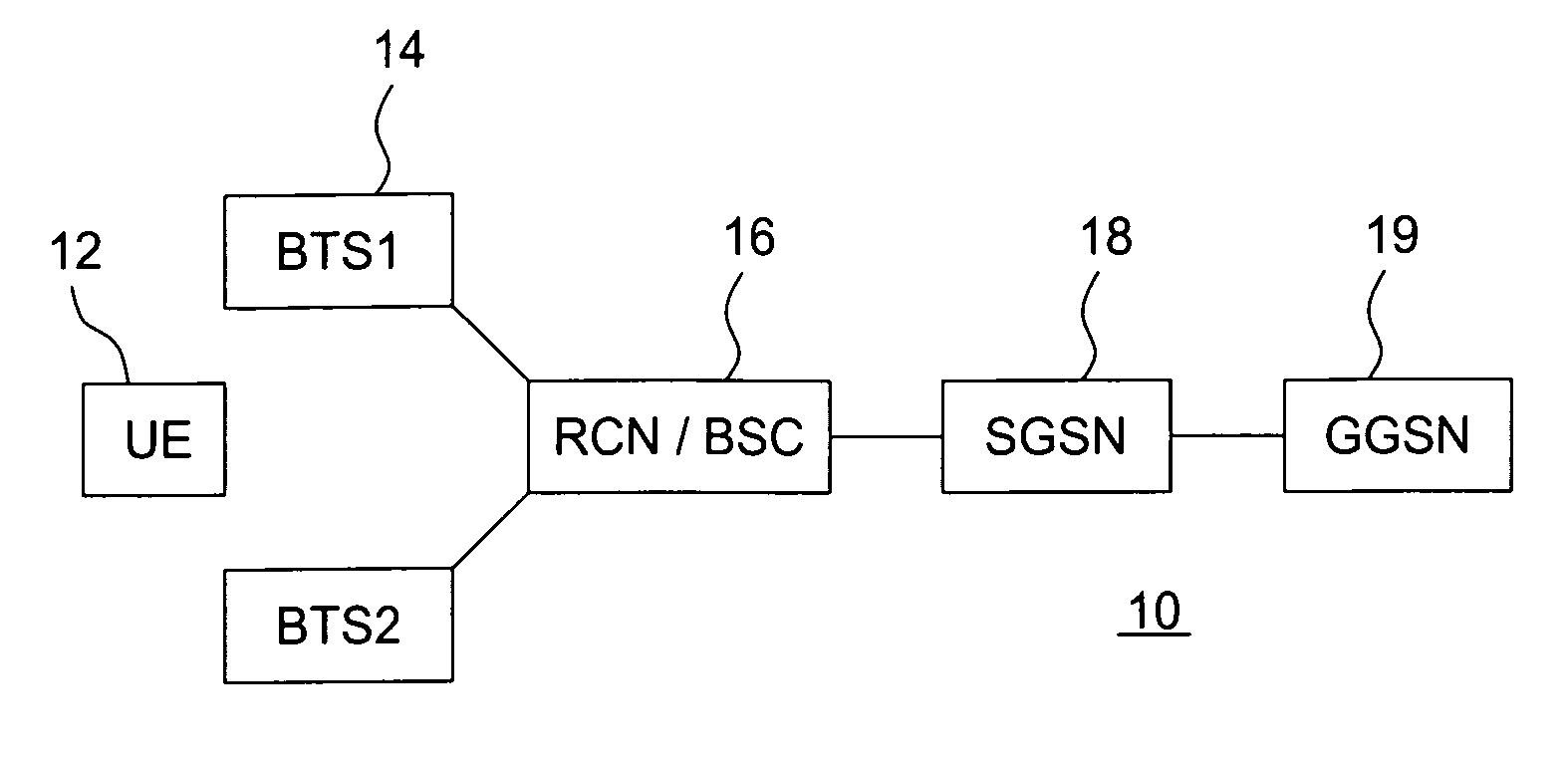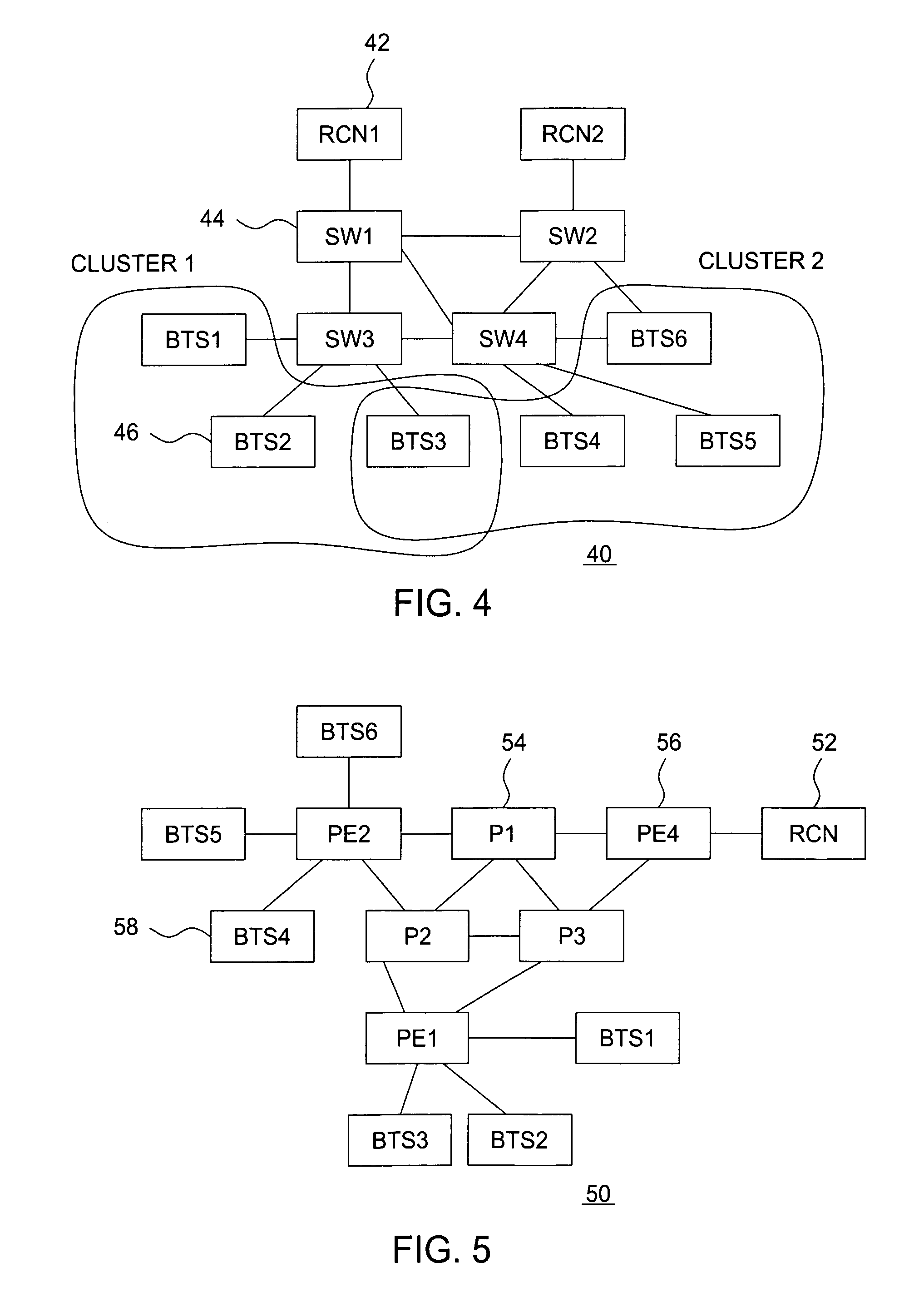Backhaul multicasting using Ethernet-based radio access networks
a radio access network and backhaul technology, applied in the field of wireless communications networks, can solve the problems of inefficiency and multicast feature, and achieve the effect of improving downlink backhaul services, facilitating multicast traffic transmission, and facilitating faster and smoother handoffs
- Summary
- Abstract
- Description
- Claims
- Application Information
AI Technical Summary
Benefits of technology
Problems solved by technology
Method used
Image
Examples
Embodiment Construction
[0016]The present invention sets forth the use of layer 2 Ethernet multicast services for use in a new backhaul solution for a radio access network, e.g., HDR or 4G wireless networks. With the availability of layer 2 Ethernet multicast services, backhaul transmissions can be simplified. It should be noted that this multicast feature is intended to support communications between the BTSs (base transmitting stations) and the BSC (base station controllers) as part of the backhaul network infrastructure, and is not intended to be used to support IP multicast between UE and other hosts. Also, although the invention is described with respect to HDR systems, it would be understood that the principles of the present invention are equally applicable to other wireless technologies, including for example HSDPA (a 3 GPP UMTS Release 5 feature) [TR25.855], 3G1x and UMTS [TR23.1011].
[0017]A first aspect of the present invention, is that the base stations (BTSs) of a network employing the inventio...
PUM
 Login to View More
Login to View More Abstract
Description
Claims
Application Information
 Login to View More
Login to View More - R&D
- Intellectual Property
- Life Sciences
- Materials
- Tech Scout
- Unparalleled Data Quality
- Higher Quality Content
- 60% Fewer Hallucinations
Browse by: Latest US Patents, China's latest patents, Technical Efficacy Thesaurus, Application Domain, Technology Topic, Popular Technical Reports.
© 2025 PatSnap. All rights reserved.Legal|Privacy policy|Modern Slavery Act Transparency Statement|Sitemap|About US| Contact US: help@patsnap.com



